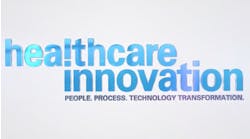Many hospital and health system CIOs say they expect to spend the rest of the year trying to maximize data analytics programs and artificial intelligence (AI) initiatives, while scrambling to secure qualified IT resources and satisfy end-users who are frustrated with workflow inefficiencies. These findings are part of Stoltenberg Consulting’s 8th Annual Health IT Industry Outlook Survey, which was just recently released.
The survey, according to officials of the consulting firm, was conducted as the COVID-19 pandemic reached U.S. populations. Among the respondents, 64 percent work for health systems, 26 percent for stand-alone hospitals, 8 percent in ambulatory care settings, and 2 percent in “other” settings.
Similar to what the 2019 iteration of the report found, AI represents a dominant theme for health IT leaders. When asked, “Aside from the COVID-19 pandemic, what is the biggest topic for health IT in 2020?” nearly 43 percent of respondents chose AI/machine learning. Familiar subjects such as “interoperability” and “greater competition in the marketplace” remain large priorities, generating response rates of almost 30 percent each.
Beyond AI and machine learning, regarding the dominant threat of COVID-19, 50 percent of those surveyed said the best thing hospital CIOs can do to directly aid in the fight against coronavirus is to lead data collection efforts to coordinate up-to-date information with the CDC and state reporting. Another 26 percent noted the importance of CIOs overseeing the addition of virus identifier and origination questionnaires into EHRs.
The findings further showed that retaining and budgeting for qualified IT resources topped the list of biggest operational burdens related to IT, garnering 42 percent of responses. Stoltenberg researchers contend that this is not entirely surprising as many healthcare organizations have had to minimize their budgets and significantly reduce or furlough staff as COVID-19 cut elective care and revenue flow. This concern is only amplified by the fact that one-third of healthcare organizations feel unprepared for the COVID-19 financial aftermath.
Perhaps additional strain on bandwidth for already stretched internal IT teams is reflective of the resource struggle as other burdens cited emphasize IT’s ability to efficiently support providers reliably, researchers offer. They include IT service failures such system downtimes or cybersecurity hits (24 percent) and provider burnout or inefficiency from EHR frustration (21 percent). This resource strain heightens already significant IT support bandwidth concern, which hinders issue ticket resolution and one-on-one user support time, they said.
When asked, “What is the top area of IT where you wish you could have stronger support?” respondents were almost even in their desire for support toward “applicable data analytics insights” (34 percent) and “the IT help desk” (32 percent). This equal combination of needs highlights the persistent desire healthcare leaders have for greater understanding of the ongoing issue trends in addition to more meaningful data insights to mitigate clinical care and end-user support needs, researchers suggested.
To this point, when asked where healthcare organizations will invest the most IT dollars this year, “Maximizing data analytics program” took the top spot (37 percent). This was closely followed by “applying AI initiatives” (34 percent), while EHR version upgrades (18 percent) and cybersecurity measures (11 percent) fell in the IT investment rankings. “This emphasizes the transition from initially dipping into data analytics program launch to now leveraging more robust programs to better predict and align resources for emergency response, population health management and operational efficiency during COVID-19 and beyond the pandemic,” the report stated.
What’s more, notably, 45 percent of those surveyed said that EHR version upgrades were their organization’s “most recent or near-future mission-critical IT event.” Other responses included “system, server or software patching” (29 percent), “EHR system downtime” (16 percent), and “system consolidation from M&A activity” (11 percent).
In the end, the report’s researchers concluded, “It appears that COVID-19 has caused CIO priorities to pivot somewhat. Whereas past years’ surveys reflected an emphasis on long-term initiatives such as value-based care alignment with health system expansion, this year’s responses reveal more immediate data analysis, resource and workflow priorities.”


